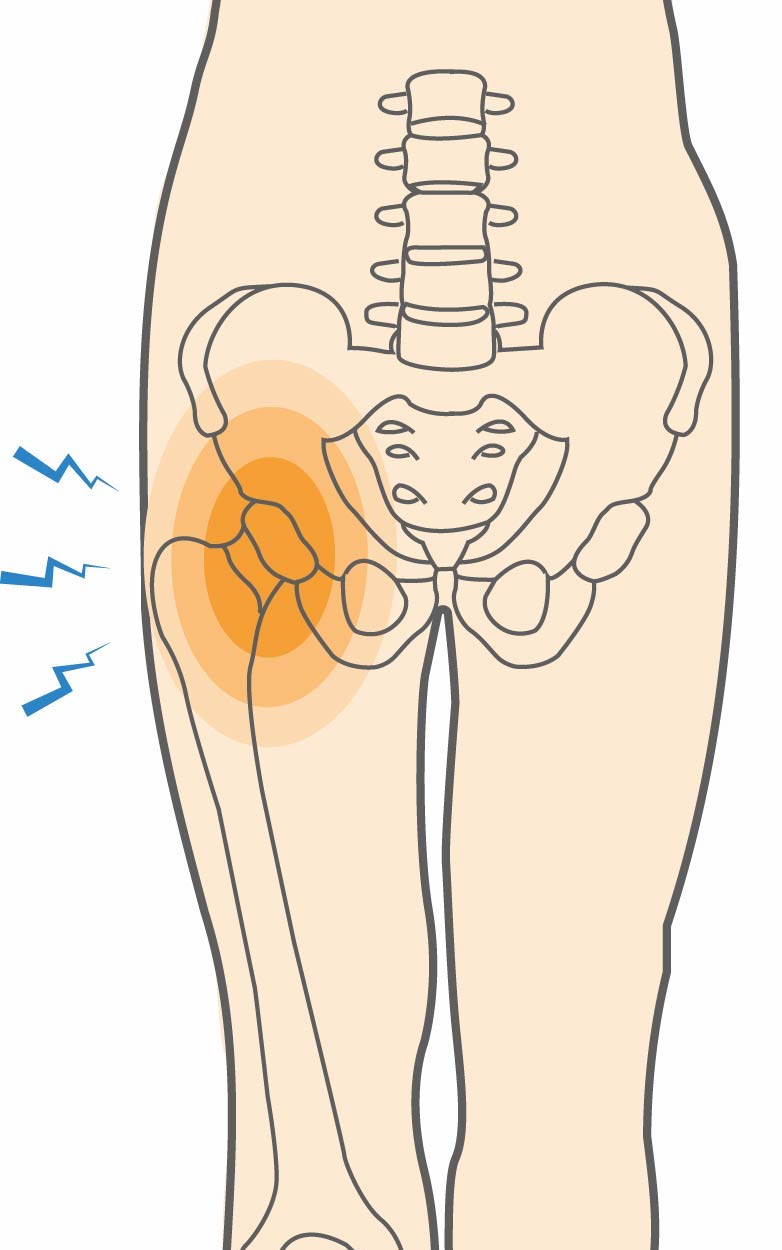A hip contusion, or bruised hip, is a mild injury that can occur due to a direct impact to the hip. When a bruise or contusion occurs, the small blood vessels get damaged, and blood leaks out under the skin, causing the typical swelling and bruising in these injuries. While a bruised hip is uncomfortable and may temporarily make it difficult to walk or use your hip normally, it’s an injury that typically resolves quickly. Sometimes, these injuries are called ‘Hip pointers,’ especially in the sporting world.
Hip Contusion Causes, Symptoms & Treatment Options
A hip contusion, or bruising of the hip, is a mild injury that can occur as a result of a direct impact to the hip. When a bruise or contusion occurs, the small blood vessels get damaged and blood leaks out under the skin causing the typical swelling and bruising seen in these injuries. While a hip contusion is uncomfortable and may temporarily make it difficult to walk or use your hip normally, it’s an injury that typically resolves quickly. Sometimes, especially in the sporting world, these injuries are called ‘Hip pointers’.
Overview
Overview

What causes Hip Contusion?
A hip contusion usually results from a direct blow to the hip from an object or another person. It can also occur due to striking your hip during a fall. Any blunt trauma with sufficient force to propel its energy into the muscle can cause a contusion. This is often referred to as hip bone trauma. Contusions may be the result of sports-related injuries. Hip contusions are common in contact sports, especially the following;
- Football
- Rugby
- Lacrosse
- Soccer
- Basketball
Risk factors for a hip contusion or a hip pointer include participation in contact sports and wearing limited or no padding or protective equipment in the region.
Symptoms
If you have a hip Contusion, you may have these symptoms:
- Pain and/or stiffness in the hip
- Ecchymoses, or ‘black and blue’ bruising and/or redness.
- Swelling of the hip
- Difficulty weight bearing and/or limping
If you have a hip contusion you are usually able to put some pressure on your hip and move the hip but with some discomfort.
When to see a doctor
Although a hip contusion doesn’t usually require medical treatment, you may need to see your doctor to ensure you don’t have a more serious injury. Make an appointment to see your doctor if you injure your hip and have swelling/pain that gets worse instead of better, have a lot of bruising or hip swelling, or have trouble weight bearing. Your doctor will ask about your injury and symptoms and examine your hip. To rule out another injury, such as significant hip bone trauma, your doctor may order an X-ray or MRI to get a better look at the bones and soft tissues of your hip.
Non-operative treatment
Hip contusions are always treated nonoperatively. Conservative treatments include:
- Laying flat to take your weight off the hip
- Crutches or a cane as needed
- Rest, including taking a break from play
- Icing your hip (every one to two hours for 20 minutes) – The general recommendation is to avoid heat during the first 24-48 hours to avoid increasing the extent of bleeding and swelling.
- Over-the-counter pain medication, like ibuprofen or acetaminophen, if needed
- Severe contusions are often treated by a Physical Therapist or an Athletic Trainer. They are often the best people to advise you on when it is safe to return to your sport.
Try these hip contusion exercises to help address your condition:
Below is a PDF of the Hip Contusion Exercises Program
Recovery
After a hip contusion, you may be able to restart normal activities after just a few days, though more severe contusions may require several weeks of resting your hip. You should start stretching exercises within a few days of your injury and progress to strengthening and weight-bearing exercises, under the guidance of your doctor or physical therapist. You can return to play once you’ve regained your full range of motion and strength of your ankle, knee and hip.
GET BACK TO WHAT YOU LOVE. FASTER
Frequently Asked Questions
What causes a hip muscle contusion?
A hip muscle contusion occurs from a direct, blunt impact to the muscle, often during sports or falls. Mild cases respond well to at-home care, but moderate to severe injuries may need medical attention.
Can you walk with a hip contusion?
Yes, though walking may be painful at first. A hip contusion can make movement difficult temporarily, but usually improves with rest and time.
What is a bone contusion to the hip called?
A bone bruise on the side of the hip is known as a hip pointer or iliac crest contusion, typically caused by a direct blow during sports or contact activities.
How can you prevent contusions?
Prevention includes:
- Wearing proper protective gear during activities
- Avoiding risky movements or collisions
- Treating injuries promptly with rest, ice, compression, and pain relief if needed

